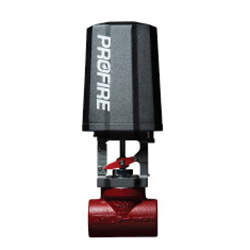- Albanian
- Arabic
- Belarusian
- Bengali
- Czech
- English
- French
- German
- Hebrew
- Hungarian
- Indonesian
- irish
- Italian
- Japanese
- kazakh
- Persian
- Russian
- Thai
- Uzbek
- Vietnamese
Innovative Concepts for Roller Coaster Design and Architectural Planning
The Art and Science of Roller Coaster Design
Roller coasters are not just thrilling rides; they are complex machines that blend art, engineering, and a deep understanding of physics. The design of a roller coaster begins with an idea, often inspired by imagination or a desire to invoke adrenaline. However, transforming that idea into a functional and safe attraction requires meticulous planning and precision.
The Art and Science of Roller Coaster Design
Physics plays a crucial role in roller coaster design. Understanding gravitational forces, centripetal acceleration, and inertia is essential in ensuring that the ride is both exhilarating and safe. Designers calculate the optimal height for hills to generate sufficient speed without compromising safety. The curves need to be engineered precisely so that riders feel the thrill without being in danger of discomfort or injury. The thrill of a roller coaster comes from the sensation of weightlessness and the adrenaline rush, carefully designed within the constraints of physics.
roller coaster design drawing

Once the initial designs are complete, prototypes are built. These prototypes are often scaled down and rigorously tested to ensure all safety standards are met. Engineers evaluate rider restraint systems, the structural integrity of the track, and the overall stability of the coaster. Adjustments can be made as needed, often leading to changes in the design. It is a dynamic process that requires collaboration among architects, engineers, and safety inspectors.
Another vital aspect of roller coaster design is considering the experience of the rider. It is not enough to create a fast, twisting ride; the anticipation and emotional journey are equally important. Designers focus on the pacing of the ride, incorporating moments of suspense, sudden drops, and exciting turns to maximize the thrill. They also consider the aesthetics—how the coaster fits into its environment, the colors chosen, and the thematic elements that can enhance the overall experience.
In recent years, innovation has transformed roller coaster design. Advances in technology allow for the creation of virtual reality experiences, interactive elements, and even roller coasters that soar through the air. These innovations push the boundaries of what is possible, attracting a new generation of thrill-seekers.
In summary, roller coaster design is an intricate blend of art, engineering, and physics. The journey from concept to reality involves extensive planning, collaboration, and innovation. As coasters continue to evolve, they remain a testament to human creativity and our enduring desire for exhilaration. Whether it’s a hair-raising drop or a dizzying spin, roller coasters will continue to thrill audiences and bring joy for years to come.
-
Flume Ride-Hebei Zhipao Amusement Equipment Manufacturing Co., Ltd.|Thrilling Water Attraction&Customizable DesignJul.30,2025
-
Flume Ride - Hebei Zhipao Amusement Equipment | Water Coaster, Thrilling DescentJul.30,2025
-
Flume Ride - Hebei Zhipao | Thrilling Water AttractionJul.30,2025
-
Flume Ride: Thrilling Water Attraction by Hebei Zhipao|Log Flume Manufacturers&Flume Ride DesignJul.30,2025
-
Flume Ride-Hebei Zhipao Amusement Equipment Manufacturing Co., Ltd.|Thrilling Water Coaster, Safe DesignJul.30,2025
-
Flume Ride-Hebei Zhipao Amusement Equipment Manufacturing Co., Ltd.|Thrilling Water Attraction, Safe DesignJul.30,2025
